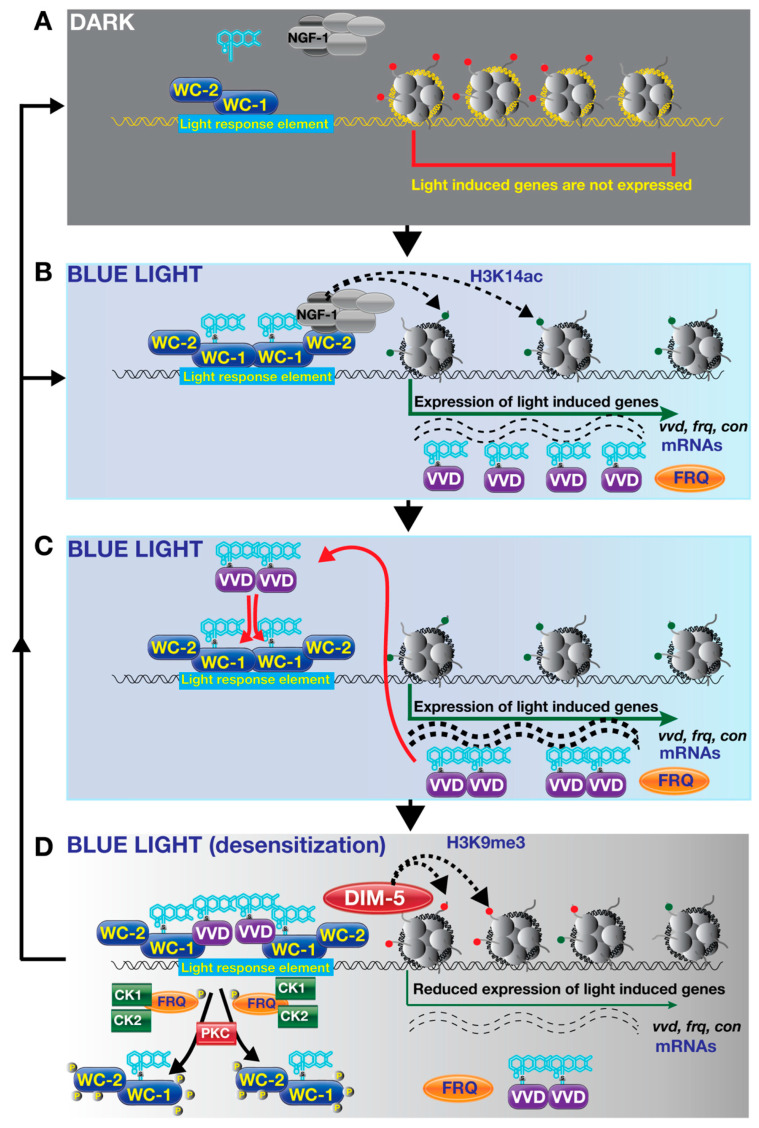Figure 5.
Blue light signalling and its consequences on gene expression. (A) Dark condition: The WC-1 and WC-2 form a WCC complex and bind to light-response elements in the promoters of light-regulated genes in the absence of light. Light-responsive genes presumably have H3K9 methylation or similar, which results in gene silencing. (B) Upon blue light exposure, FAD is attached to LOV domains of WC-1, which induces heterodimer formation of the WCC heterodimers. This also induces histone acetyl transferase NGF-1-dependent acetylation of nucleosomes and gene expression. (C) Light-induced genes, including conidiation genes, photoadaptation gene vvd and frequency gene frq, are transcribed by transcription machinery. VVD proteins, which are translated from vvd mRNA, form homodimers under illumination via covalent bonding to FAD. frq mRNA is also translated to the FRQ protein. (D) These VVD homodimers interfere with the WCC complexes via interacting with the WC-1 subunit. This reduces binding efficiency of the WCC complex to target promoters, which diminishes light-dependent gene expression. Further displacement of WCC from promoters is catalyzed by protein kinase C (PKC) and FRQ-associated kinases, casein kinase 1 and 2. Displacement of WCC is further mutually influenced through the methylation of Histone 3 Lysine 9 by histone methyltransferase, DIM-5. This ensures reactivation of blue light signalling for another round.

